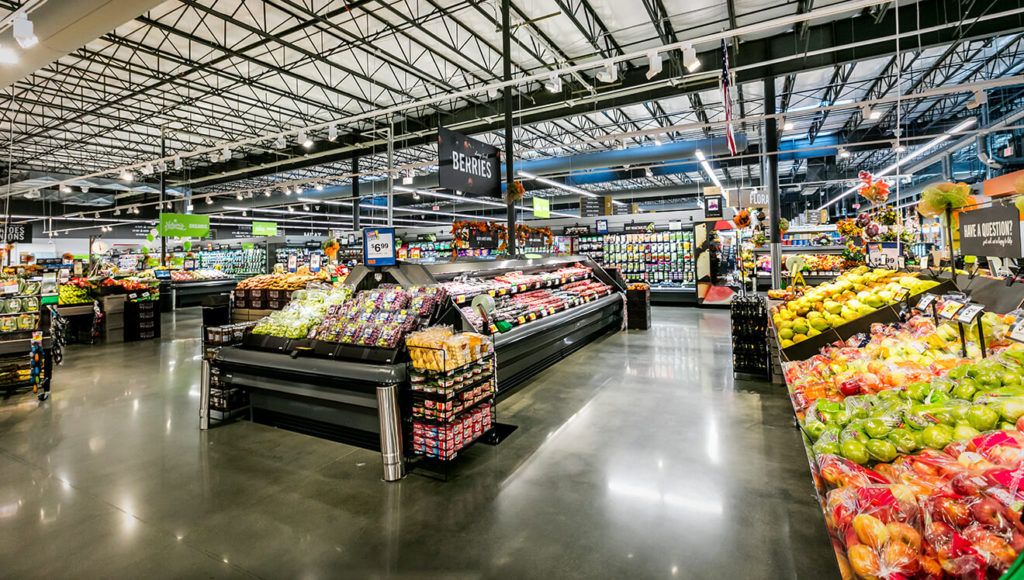Staying ahead of trends is crucial for businesses looking to maintain relevance and drive success. Several significant trends are poised to shape the retail landscape. Considering this, retail services companies must identify the latest trends to stand out. Let’s delve deeper into each of the five biggest trends expected to have a profound impact on the retail promotion services industry in the coming year.
1. Emphasis on Sustainability
In recent years, sustainability has emerged as a central theme in consumer consciousness, influencing purchasing decisions and brand loyalty. In 2024, this trend is expected to intensify as consumers continue to prioritise environmentally-friendly practices and ethical sourcing. Retailers are responding by integrating sustainability into their business strategies, from supply chain management to product packaging.
Consumer Demand: Increasingly, consumers are seeking products and brands that align with their values, particularly regarding environmental responsibility. Retailers are under pressure to adopt sustainable practices to meet this demand and remain competitive in the market.
Eco-Friendly Initiatives: Retailers are implementing various sustainability initiatives, such as reducing carbon emissions, minimising waste, and using renewable energy sources. Additionally, many companies are exploring alternatives to traditional packaging materials to reduce environmental impact.
Brand Reputation: Demonstrating a commitment to sustainability can enhance a retailer’s reputation and appeal to socially-conscious consumers. Brands that prioritise sustainability are likely to build stronger relationships with their customers and foster brand loyalty over time.
2. Rise of E-commerce
The shift towards e-commerce has been steadily gaining momentum, and this trend is expected to accelerate even further in 2024. With advancements in technology and changing consumer preferences, online shopping has become increasingly convenient and accessible, prompting retailers to invest in digital strategies.
Convenience and Accessibility: E-commerce offers unparalleled convenience, allowing consumers to shop anytime, anywhere, from the comfort of their own homes. Retailers are capitalising on this trend by enhancing their online platforms and streamlining the shopping experience.
Omnichannel Strategies: To meet the demands of modern consumers, retailers are adopting omnichannel approaches that seamlessly integrate online and offline channels. This integration allows customers to transition between channels effortlessly, providing a cohesive shopping experience across all touchpoints.
Mobile and Social Commerce: The proliferation of smartphones and social media platforms has fueled the growth of mobile commerce and social commerce. Retailers are leveraging these channels to reach and engage with consumers directly, driving sales and fostering brand awareness.
3. Personalised Shopping Experiences
In response to consumers’ growing discernment, they anticipate personalized shopping experiences that cater to their unique preferences and needs. In 2024, retail services company will continue using data analytics and artificial intelligence to offer tailored recommendations and promotions, ultimately enhancing customer engagement and loyalty.
Data-Driven Insights: What can be more reliable than data analysis? It is best to gain insights into consumer behaviour, preferences, and purchasing patterns. By analysing this data, retailers can identify trends, anticipate customer needs, and deliver personalised experiences that resonate with their target audience.
Artificial Intelligence(AI): AI plays a crucial role in personalisation efforts, enabling retailers to automate processes, such as product recommendations, email marketing, and customer service interactions. AI-driven algorithms can analyse vast amounts of data to deliver highly relevant and personalised experiences to individual customers.
Customer Engagement: Personalisation enhances customer engagement by creating meaningful interactions and fostering a sense of connection between the consumer and the brand. By delivering personalised experiences, retailers can build stronger relationships with their customers and drive repeat business.
4. Integration of Augmented Reality (AR) and Virtual Reality (VR)
Technological advancements, such as augmented reality (AR) and virtual reality (VR), are revolutionising the retail experience by offering immersive and interactive shopping experiences. In 2024, retailers will increasingly leverage AR and VR technologies to enhance product visualisation, create virtual try-on experiences, and provide virtual tours of stores.
Enhanced Product Visualisation: AR and VR technologies allow consumers to visualise products in a virtual environment, enabling them to make more informed purchasing decisions. Retailers are integrating AR and VR into their online platforms to offer virtual product demonstrations and interactive shopping experiences.
Virtual Try-On Experiences: In industries such as fashion and beauty, virtual try-on experiences are becoming increasingly popular. AR technology enables consumers to virtually try on clothing, accessories, and cosmetics, providing a realistic preview of how the products will look and fit.
Virtual Store Tours: Retailers are leveraging VR technology to offer virtual tours of their stores, allowing customers to explore the retail space from the comfort of their own homes. Virtual store tours provide a convenient and immersive way for consumers to browse products and discover new offerings.
5. Focus on Health and Wellness
The COVID-19 pandemic has prompted a heightened focus on health and wellness, leading to increased demand for health-related products and services. Retailers will continue to prioritise health and wellness offerings, catering to consumers’ growing interest in products that support physical and mental well-being.
Expanding Product Offerings: Retailers are expanding their product offerings to include a wide range of health and wellness products, such as vitamins, supplements, fitness equipment, and organic foods. By diversifying their product lines, retailers can capitalise on the growing demand for health-related products.
Wellness Initiatives: Many retailers are investing in initiatives to promote health and wellness, both in-store and online. These initiatives may include hosting wellness events, providing educational resources, and offering health-related services, such as nutrition counselling and fitness classes.
Consumer Education: With increased interest in health and wellness, retailers are taking steps to educate consumers about the benefits of their products and services. By providing information and resources, retailers can empower consumers to make informed choices about their health and well-being.
A retail service company can leverage these excellent potential trends to mark a place in the industry by evolving consumer preferences, technological advancements, and socio-economic factors. The five trends outlined above – sustainability, e-commerce, personalised shopping experiences, AR/VR integration, and health and wellness – are expected to shape the retail landscape in 2024 and beyond. By embracing these trends and adapting their strategies accordingly, ventures dealing in retail promotion services or other associated industries can position themselves for success in an increasingly competitive and dynamic marketplace.



